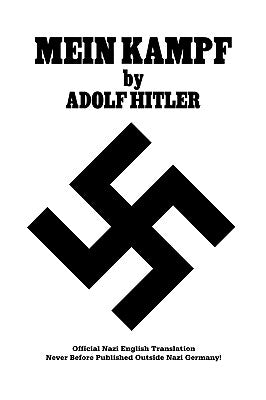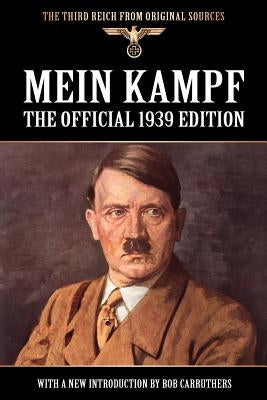Essential Reads on Modern Art Movements

Modern art movements have shaped the way we understand creativity, innovation, and cultural expression. From the groundbreaking works of the early 20th century to the innovative artistic forms that continue to emerge today, these movements have left a lasting impact on the world of art. For those seeking to delve into the evolution of modern art, the following essential reads will offer valuable insights into its development, key figures, and revolutionary ideas. In this blog, we’ll explore a selection of the best books that cover different aspects of modern art movements, from abstract expressionism to postmodernism.
1. The Shock of the New by Robert Hughes
Robert Hughes’ The Shock of the New is widely regarded as one of the most influential books on modern art. First published in 1980, this book provides an in-depth exploration of the development of modern art from the late 19th century to the 20th century, focusing on how various movements shocked and revolutionized the art world. Hughes writes with a sharp, critical voice, and his analysis covers a wide range of topics, including surrealism, cubism, and pop art.
Key takeaway:
An essential guide for understanding how modern art evolved and the cultural shocks that propelled it forward.
2. Abstract Expressionism by David Anfam
Abstract Expressionism was a major post-World War II art movement that emphasized spontaneous, subconscious creation. David Anfam’s Abstract Expressionism is an authoritative guide to this movement, featuring artists such as Jackson Pollock, Willem de Kooning, and Mark Rothko. The book provides an extensive exploration of the origins, key works, and critical reception of the movement, with visual and textual analysis that helps readers appreciate its significance.
Key takeaway:
A comprehensive look at the birth and impact of abstract expressionism and its influence on modern art.
3. The Story of Art by E.H. Gombrich
Though not exclusively about modern art, E.H. Gombrich’s The Story of Art is a foundational text that traces the history of art from prehistoric times to modernity. Gombrich’s accessible writing style makes this an ideal introduction to art history, and his chapters on modern movements, including Impressionism and Fauvism, are essential reading for understanding the roots of contemporary art. The book serves as both an introduction and a deeper dive into the key transitions that led to the rise of modern art.
Key takeaway:
An all-encompassing journey through the history of art, including a focus on the modern art movements that reshaped the art world.
4. What Are You Looking At?: The Surprising, Shocking, and Sometimes Strange Story of 150 Years of Modern Art by Will Gompertz
Will Gompertz’s What Are You Looking At? provides an engaging and accessible overview of 150 years of modern art. Covering movements like impressionism, surrealism, and pop art, Gompertz explains the meaning and significance of various styles in a witty and conversational tone. For readers who feel intimidated by modern art or are unsure where to start, this book offers a clear, informative, and entertaining guide.
Key takeaway:
A lively and approachable introduction to modern art movements and their surprising history.
5. After Modern Art 1945-2000 by David Hopkins
David Hopkins’ After Modern Art 1945-2000 provides an in-depth look at the evolution of art in the postwar period. The book focuses on how modernism transitioned into contemporary forms, such as conceptual art, performance art, and minimalism. Hopkins explores the tension between abstraction and realism, as well as the impact of technology, mass media, and globalization on the development of modern art movements. It’s a critical read for those wanting to understand how art has continued to evolve in recent decades.
Key takeaway:
An insightful analysis of the transition from modern to contemporary art, highlighting key movements and ideas of the late 20th century.
6. Art Since 1900: Modernism, Antimodernism, Postmodernism by Hal Foster, Rosalind Krauss, Yve-Alain Bois, and Benjamin H.D. Buchloh
This comprehensive textbook covers the full spectrum of modern art, from the beginning of the 20th century to the dawn of the 21st century. Art Since 1900 provides critical essays on major art movements, key figures, and the philosophical debates that shaped the direction of modern art. This book is an academic approach to understanding the intellectual underpinnings of modernism, antimodernism, and postmodernism, and is an essential resource for anyone seriously studying modern art.
Key takeaway:
A scholarly yet accessible text that provides deep insights into the evolution of art in the 20th century and beyond.
7. Dada's Women by Naomi Sawelson-Gorse
The Dada movement, a radical and often absurd artistic movement, challenged conventional art norms and aimed to disrupt traditional culture. In Dada's Women, Naomi Sawelson-Gorse explores the role that women played in shaping the Dada movement. While often overlooked in historical accounts, female Dadaists like Hannah Höch contributed significantly to the radical ideas and artistic innovations of the movement. This book provides a feminist perspective on one of the most important modern art movements.
Key takeaway:
A feminist analysis of the Dada movement, focusing on the significant contributions of women to this avant-garde artistic revolution.
8. Minimalism: Art and Polemics in the Sixties by James Meyer
Minimalism emerged in the 1960s as a reaction to abstract expressionism, focusing on simplicity and form over personal expression. James Meyer’s Minimalism: Art and Polemics in the Sixties traces the origins and development of minimalism, examining its key artists, including Donald Judd, Carl Andre, and Dan Flavin. The book also delves into the philosophical and critical debates that surrounded the movement, offering a nuanced understanding of minimalism's impact on modern and contemporary art.
Key takeaway:
An authoritative account of the rise of minimalism and its lasting impact on the art world.
Essential Reads on Modern Art Movements
The modern art movements of the 20th and 21st centuries have redefined what art can be, pushing boundaries and challenging conventions. The books highlighted in this article provide readers with essential insights into the evolution of modern art, from the early pioneers of abstraction to the postmodernists who defied traditional notions of artistic expression. Whether you're a seasoned art enthusiast or just beginning to explore the world of modern art, these essential reads will guide you through the key movements, figures, and ideas that have shaped contemporary art. Understanding modern art requires not only an appreciation for its visual elements but also a recognition of the cultural, political, and philosophical contexts that have influenced its development.
By immersing yourself in these texts, you'll gain a deeper understanding of the radical transformations that modern art has undergone and the lasting impact it continues to have on how we perceive and engage with the world around us.
Explore your favorite book at your own online bookstore.
What are modern art movements?
Modern art movements refer to artistic styles and trends that emerged between the late 19th century and the mid-20th century, including movements such as impressionism, cubism, surrealism, abstract expressionism, and pop art.
Which modern art movement is considered the most influential?
Many experts regard abstract expressionism as one of the most influential modern art movements due to its impact on the direction of contemporary art, though other movements like cubism and surrealism are also highly influential.
What are some essential books to learn about modern art movements?
Essential reads include The Shock of the New by Robert Hughes, Abstract Expressionism by David Anfam, What Are You Looking At? by Will Gompertz, and Pop Art by Klaus Honnef.
How do modern art movements differ from traditional art styles?
Modern art movements broke away from traditional styles by experimenting with new techniques, forms, and ideas. These movements focused more on abstraction, emotional expression, and challenging the status quo rather than simply depicting reality.
Who are the key figures in modern art movements?
Key figures include Pablo Picasso (cubism), Salvador Dalí (surrealism), Jackson Pollock (abstract expressionism), Andy Warhol (pop art), and Wassily Kandinsky (abstract art).
What is the best book for beginners to learn about modern art?
The Story of Art by E.H. Gombrich is an excellent starting point for beginners. It provides a broad overview of art history, including key modern art movements.
How did modern art movements influence contemporary art?
Modern art movements laid the foundation for contemporary art by challenging traditional notions of aesthetics, encouraging experimentation, and promoting the idea that art could be anything from conceptual to performance-based.
Why is understanding modern art important?
Understanding modern art is crucial because it offers insights into how societal changes, such as industrialization, war, and technology, influenced the development of new artistic expressions that continue to shape contemporary culture.
What are some famous modern art pieces and where can I view them?
Famous modern art pieces include Pablo Picasso's Les Demoiselles d'Avignon (cubism), Salvador Dalí's The Persistence of Memory (surrealism), and Jackson Pollock's No. 5, 1948 (abstract expressionism). These can be viewed at major museums like the Museum of Modern Art (MoMA) in New York and Tate Modern in London.
Are there any online resources or digital books on modern art movements?
Yes, many resources such as MoMA's online archive, Google Arts & Culture, and digital books from platforms like Kindle offer accessible ways to explore modern art movements. Many essential books are also available as e-books for digital reading.












